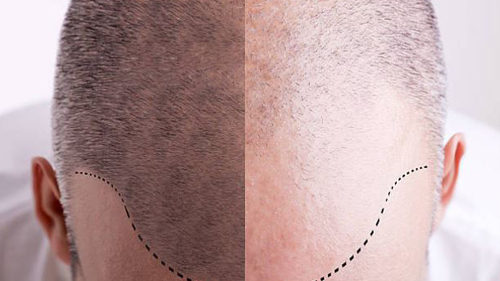What causes hair thinning?
A number of factors cause hair thinning in men and women. Nonetheless, the most common cause in men is the familial inherited male pattern hair thinning. The hormone of dihydrotestosterone (DHT) charged with causing male pattern hair thinning leads to hair thinning in the genetically predisposed patients.
While female pattern hair thinning is similarly inherited from the family, there are continuing researches on this issue. The impact of hormones on the familial inherited hair thinning in women differs from that observed with men.
Less common causes of hair thinning which need further investigation include thyroid diseases, iron deficiency, high fever, diets which lead to aggression, giving birth and the administered medications. In addition to these, dermatological disorders related to the scalp may lead to temporary or permanent hair thinning. These disorders include lupus, lichen planopilaris, and alopecia areata.
Many popular rumors are narrated regarding hair thinning. These include poor blood circulation, frequent use of shampoos and using hats or helmets.
It should be noted that every adult loses 75-125 hairs a day due to the resting phase (telogen) of hair. The hair follicles those complete this phase with hair loss start to grow new hair shafts (anagen phase). With a balance maintained during this process, the number of hairs on the scalp remains stable.
Stress is another minor factor in hair thinning which may increase male pattern hair thinning.
Which medical treatments are used against hair thinning?
After you realize that you are losing your hair, you can reverse this process if you wish. The treatments performed by administering medications –namely medical treatments- constitute one option against hair thinning. Medical treatments aim to stop hair loss and trigger hair growth.
The people who experience hair thinning should check if the medication to be used for the hair restoration treatment is approved by the FDA (Food and Drug Administration).
Finasteride (Propecia) is an oral tablet which started to be commonly administered during the last decade. Scientific researches have demonstrated that Finasteride (Propecia) stops hair loss and triggers hair growth in the majority of men. Finasteride works by decreasing the DHT (dihydrotestosterone) amount. This hormone is greatly responsible for male pattern hair thinning. Besides, Finasteride (Propecia) has no effect on the level of testosterone. Finasteride (Propecia) use gives the best results in mild to moderate hair thinning. This is the medication most commonly offered by hair restoration surgeons as an adjuvant treatment for the patients who undergo a hair transplantation operation.
While topical minoxidil (Rogaine=Minoxil) is being used as an adjuvant treatment for slowing down hair loss for more than 15 years, its effect is minimal in terms of new hair growth. Minoxidil is recommended with a concentration of 5% for men. Since this concentration level triggers hair growth on the face, it is recommended with a concentration of 2% for women.
Both of these treatments are recommended to be administered continually in order to be successful. If the patient discontinues the treatment, the thinning starts again. Although it would be too assertive to argue that these treatments are effective for everybody, they are successful to a great extent. Concomitant use of these two medications may help better with male pattern hair thinning.


